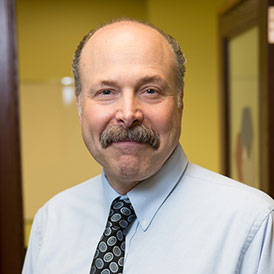In this Big Brains podcast, David Awschalom describes how he’s helping to train a new generation of quantum engineers.
The behavior of these tiny pieces is unlike anything we see in our world,” Awschalom said. “If I pull a wagon, you know how it’s going to move. But at the atomic world, things don’t work that way. Wagons can go through walls; wagons can be entangled and share information that is hard to separate.”
Supported by the DOE, the quantum network will stretch between Argonne and Fermi National Accelerator Lab—a connection that is expected to be among the longest in the world to send secure information using quantum physics. The experiment will “teleport” information across a 30-mile distance, as particles change their quantum states instantaneously rather than traveling between two points.
This project launches the construction of a communications network based on the quantum states of matter, offering a fundamentally new way to create and securely send information,” said David Awschalom, an Argonne scientist and the Liew Family Professor of Molecular Engineering at the University of Chicago, who is principal investigator of the project. “We will build a national testbed to develop the science for engineering quantum systems and explore the properties of quantum entanglement, a phenomenon that’s fascinated scientists and the general public alike.”
Professor David Awschalom is one of the world’s leading scientists in spintronics and quantum information engineering. His research involves understanding and controlling the spins of electrons, ions, and nuclei for fundamental studies of quantum systems, as well as potential applications in computing, imaging, and encryption. His group explores optical and magnetic interactions in semiconductor quantum structures, spin dynamics and coherence in condensed matter systems, macroscopic quantum phenomena in nanometer-scale magnets, and implementations of quantum information processing in the solid state. He developed a variety of femtosecond-resolved spatiotemporal spectroscopies and micromagnetic sensing techniques aimed at exploring charge and spin motion in the quantum domain. These measurements resulted in the discovery of robust electron spin coherence, transport of coherent states, and the spin Hall effect in semiconductors.
Sign up for our insideHPC Newsletter




